DMX Examples
A collection DMX-512 control examples
tigoe.github.io
DMX_Examples Home
DMX/sACN Intro
TouchDesigner DMX settings
Arduino:
Arduino DMX
Arduino sACN
JavaScript:
JavaScript node.js sACN example
JavaScript WebSerial DMX
This project is maintained by tigoe
Controlling DMX Fixtures with DMXKing’s eDMX1 Pro
DMXKing’s eDMX1 Pro interface is an Ethernet-to-DMX adapter which can communicate via sACN or ArtNet. This tutorial shows how to configure it in TouchDesigner and in QLC+ to control regular DMX fixtures.
If your system already has an sACN interface, then you can skip the eDMX1 Pro info, and just look at the configuration screens for TouchDesigner or QLC+.
This has been tested on MacOS Mojave.
Bill of Materials
- eDMX1 Pro
- USB power supply for eDMX1 Pro
- Personal computer
- Ethernet connection to personal computer
- TouchDesigner IDE, or
- QLC+
- DMXKing eDMX1 Pro Configuration Utility
- DMX-512 fixture such as an Elation SIXPAR300, a Chroma-Q ColorCharge, or an ETC Desire D22
Hardware Configuration
Power the eDMXPro via its USB connector. You can power it from a wall socket using a regular USB charging adapter, as long as the adapter can supply at least 150 milliamps. Connect the DMX connector of the unit to your DMX fixture, or to the first of your fixtures if you’ve got a chain of lights. Make sure you’ve set the starting addresses for all of your fixtures appropriately. If you’re just using one fixture, starting address 1 will be fine.
Network Configuration
Connect the eDMX1 Pro to your computer via Ethernet. You can either connect both your computer and the eDMX1 Pro to the same router, or with many computers, you can connect them directly. For example, when you plug an eDMX1 Pro into a USB-to-Ethernet adapter on a Mac, the eDMX Pro1 assigns itself an IP address in the 169.254.x.x range, as shown in Figure 1. At that time, your computer also assigns itself an address in the same range. Open your system control panel and note the IP address of your Ethernet connection when the eDMX1 Pro is plugged in.
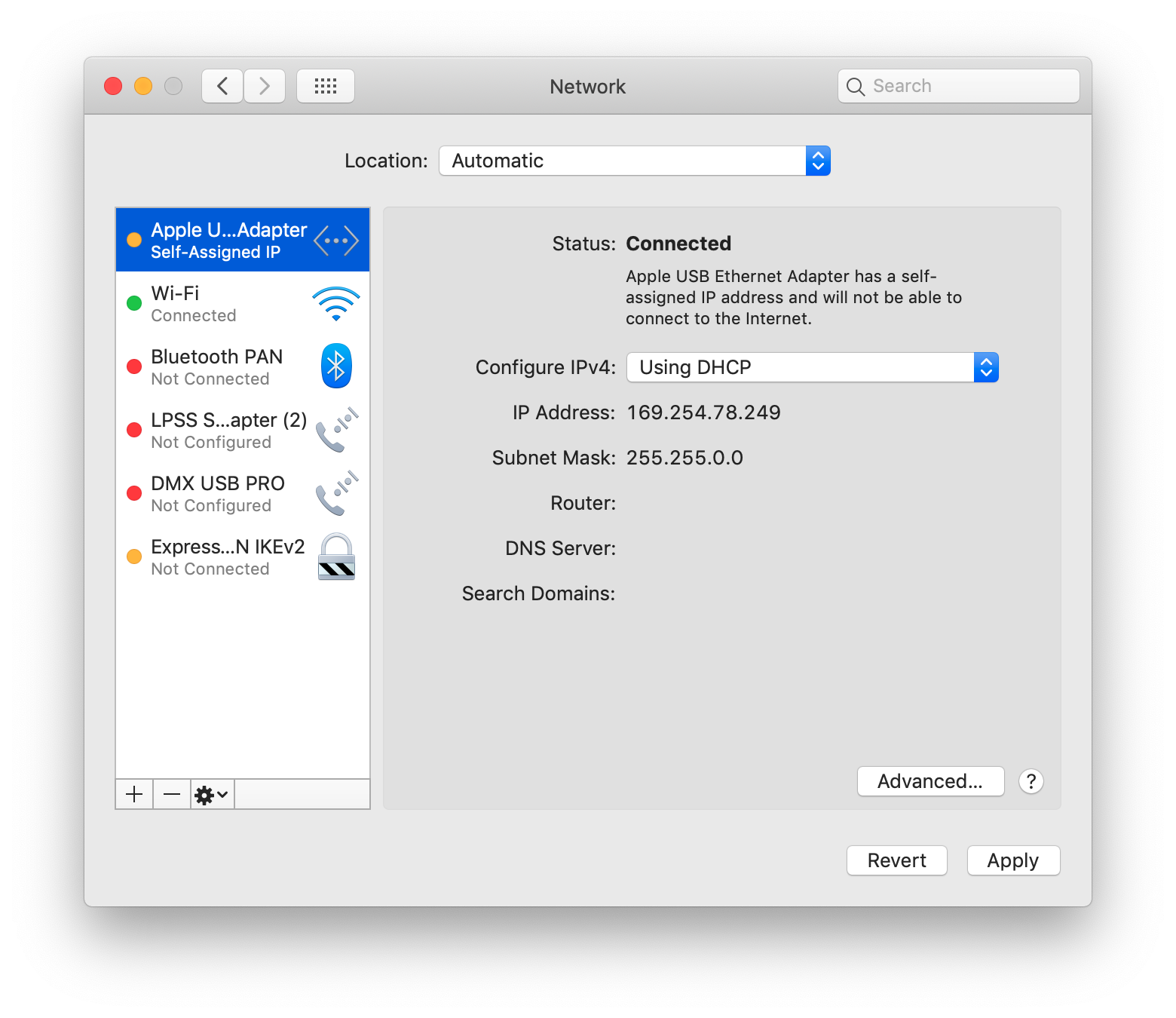
Figure 1. MacOS Network control panel showing a USB-to-Ethernet adapter, to which the eDMX1 Pro is attached. The eDMX1 Pro has self-assigned an IP address.
Note: If your eDMX1 Pro is not self-assigning you may need to use the DMXKing DMXKing eDMX1 Pro Configuration Utility to configure your eDMX1 Pro’s address. The eDMX1 Pro is factory-configured to set itself to a static IP address in the 192.168.0.x range, yet most Ethernet interfaces are configured to set themselves to an address in the 169.254.x.x range when there’s no router present. If your eDMX1 Pro is not showing up when you Node Scan, try the following with WiFi turned OFF so that the configuration utility only scans on the USB-to-Ethernet interface:
- open your Network control panel and manually assign your USB-to-Ethernet adapter the address 192.168.0.100.
- Then, open eDMX Pro Configuration Utility. Pick the 192.168.0.100 adapter from the option menu.
- Click Node Scan. After a few moments, your eDMX1 Pro will appear. Choose it, and you’ll get a configuration screen as shown in Figure 2.
- Choose DHCP, then click Apply. Close the configuration utility, then re-set your USB-to-Ethernet adapter to DHCP in your Network control panel.
- Open the eDMX Configuration Utility again. Now you’ll be able to select the 169.254.x.x address, and when you Node Scan, your eDMX1 Pro will show up with an address in the same range. You can turn your WiFi back on now too.
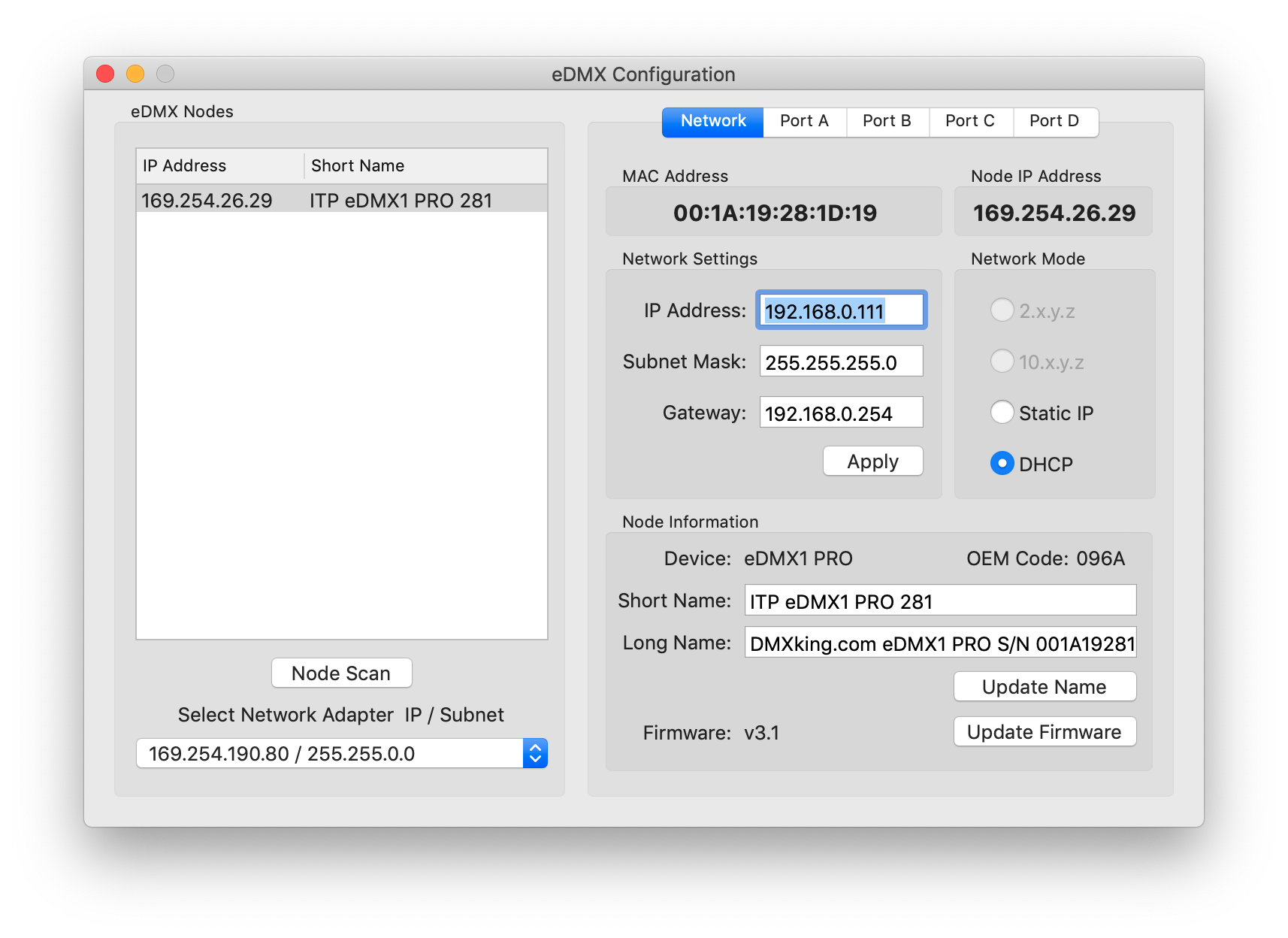
Figure 2. eDMX Pro Configuration Utility Window. Set your device to DHCP and you’ll be able to get an address on any network you connect to.
TouchDesigner DMX CHOP Configuration
Now open TouchDesigner and add a DMX Out CHOP. In the DMX tab of the CHOP, set the interface to sACN. Then set the Universe to 1. In the Network tab, click the arrow of the Interface option menu and you should see the 169.254.x.x address that your computer self-assigned in the list. Pick that, or enter it manually. Now the DMX Out CHOP will communicate with the LeDMX Pro.
DMX Tab (shown in Figure 3):
- Active - On
- Interface - sACN
- Format - Packet Per Sample
- Universe - 1
Network Tab(shown in Figure 4):
- Multicast - On
- Network Address - 255.255.255.255
- Local Address - 169.254.x.x (the specific values of the last two bytes are determined by your computer’s Ethernet address).
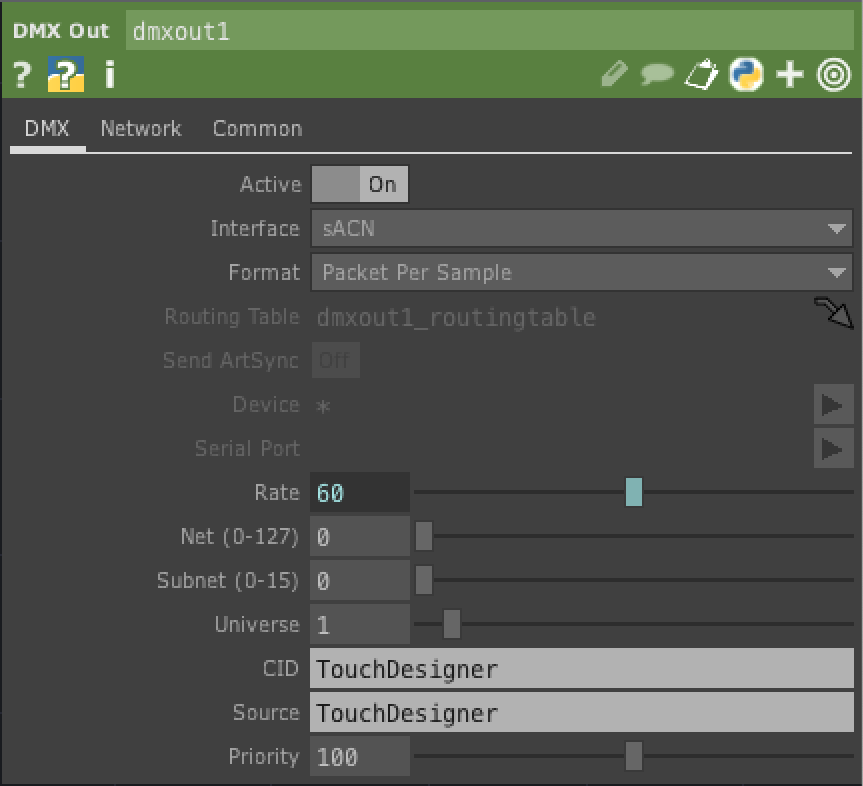
Figure 3. DMX tab of a TouchDesigner DMX Out CHOP configured for sACN control.
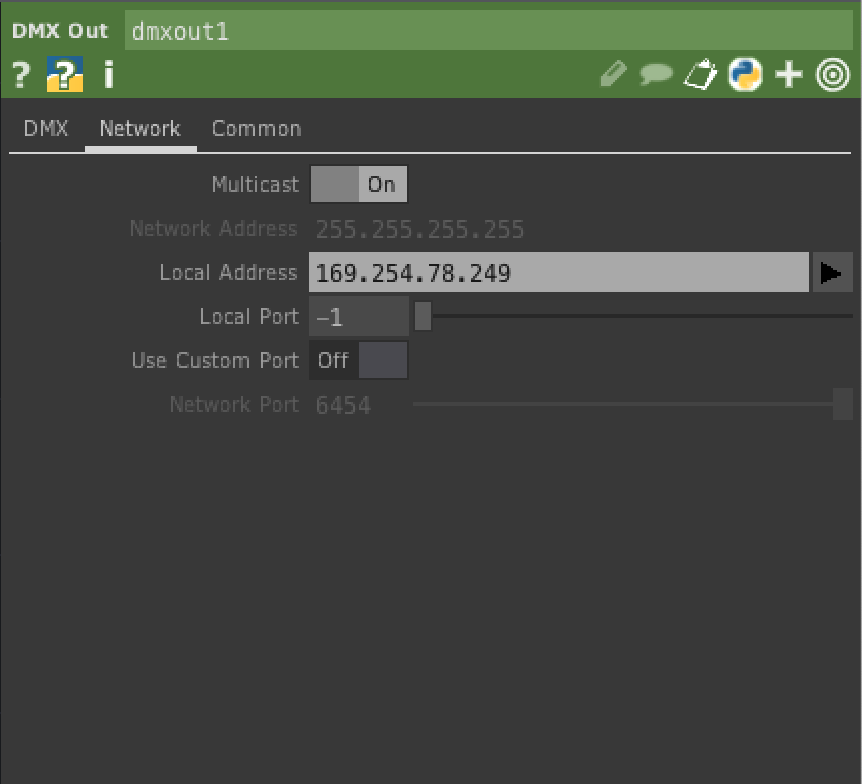
Figure 4. Network tab of a TouchDesigner DMX Out CHOP configured for sACN control. The USB-to-Ethernet’s self-assigned IP address is shown in the Local Address field.
QLC+ Configuration
If you’re using QLC+, open the application and click the Inputs/Outputs tab. You’ll see a list of input and output interfaces, as shown in Figure 5. One of them will have the self-assigned IP address beginning with 169.254.x.x. This is the eDMX1 Pro. Choose this as your output.
Next, click the Simple Desk tab. You’ll have a row of sliders. Slide any of them to control the corresponding DMX channel coming out of your eDMX1 Pro.
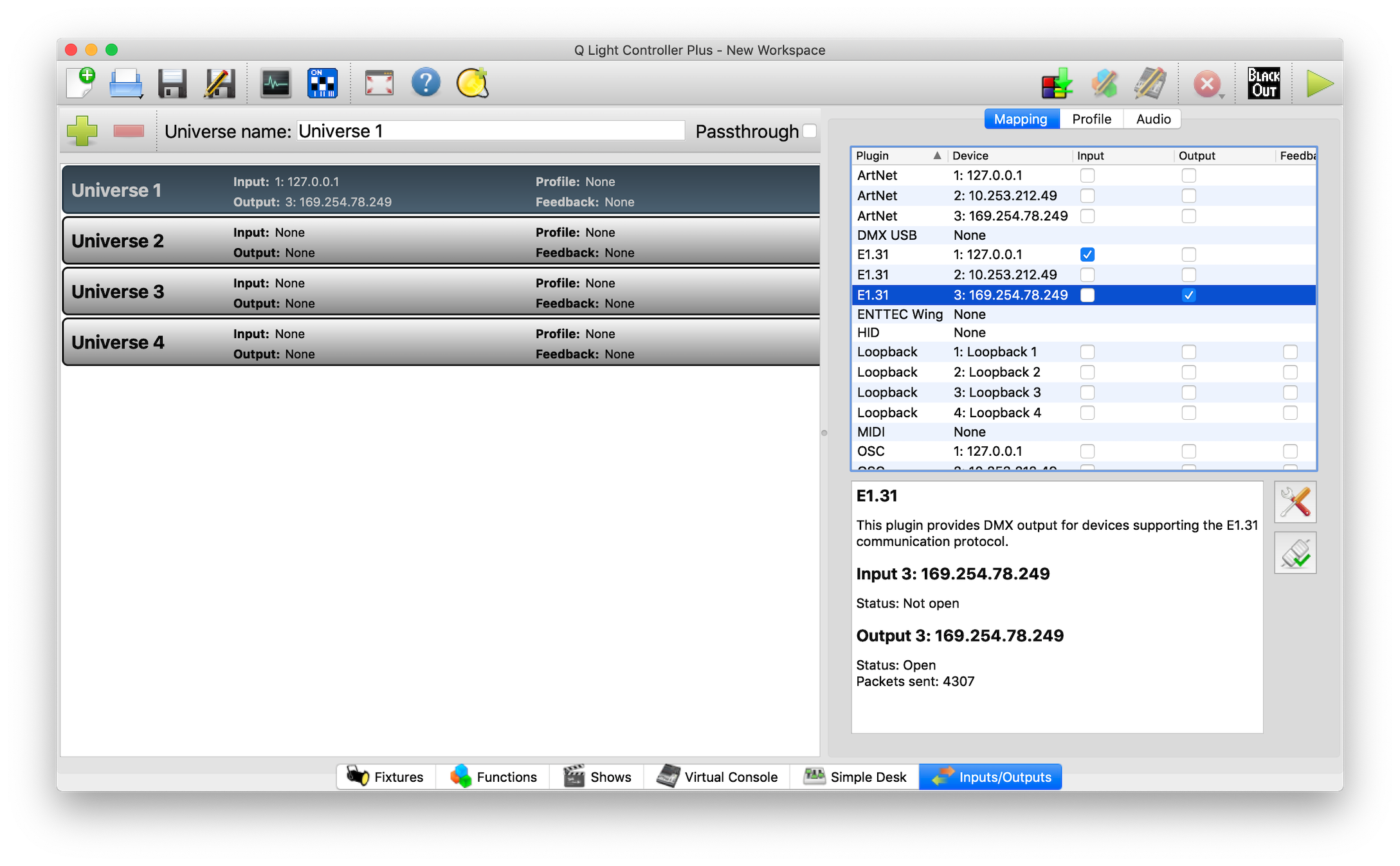
Figure 5. Inputs/Outputs tab of QLC+ showing the eDMX1 Pro on the 169.254.x.x. interface as the output. Unless you’re taking input from another program, it doesn’t matter what you choose as input.
Example Program
This touchDesigner program will control channels 1 through 4 of a DMX universe.